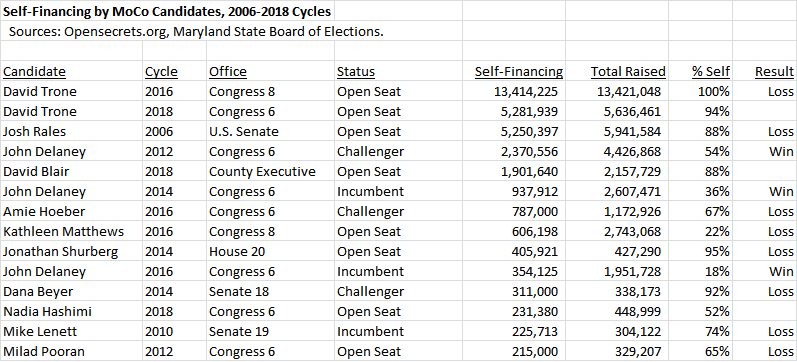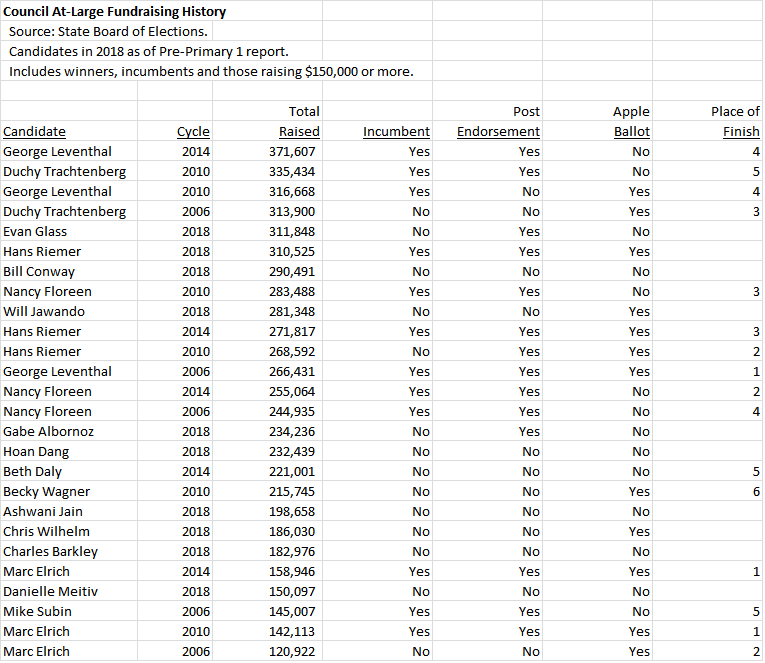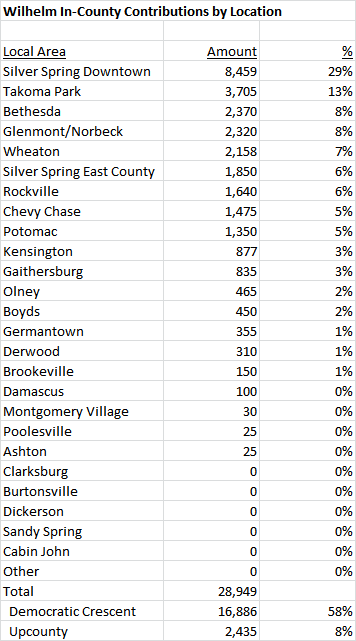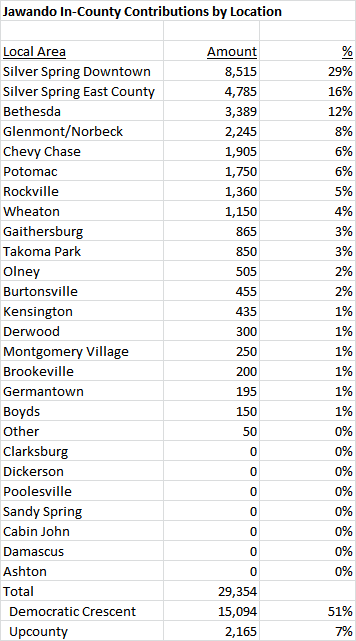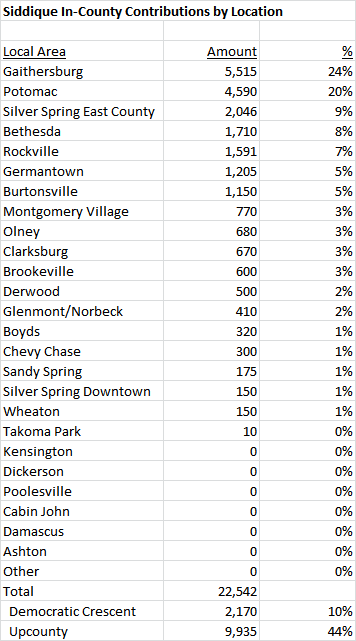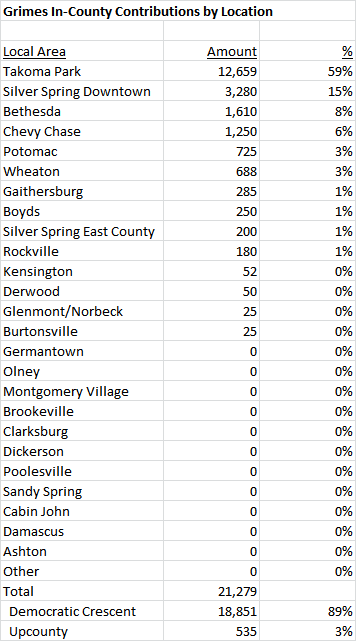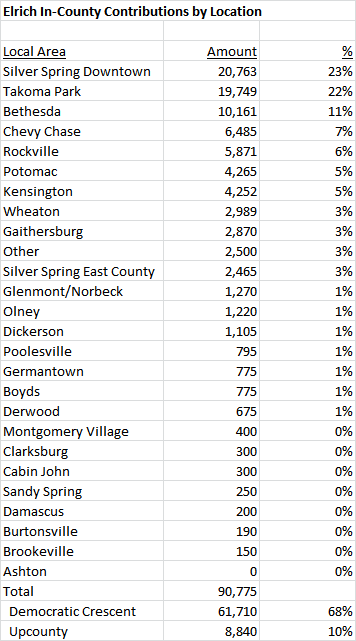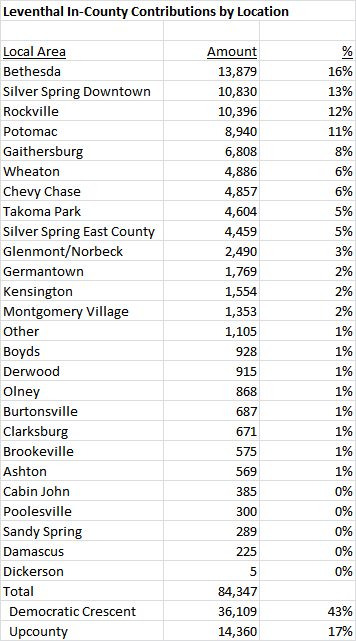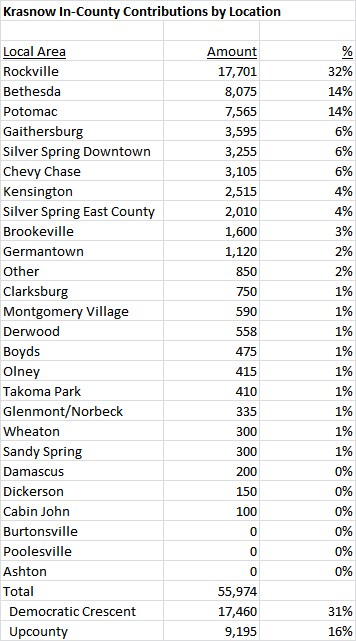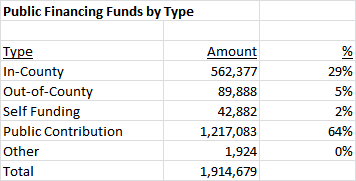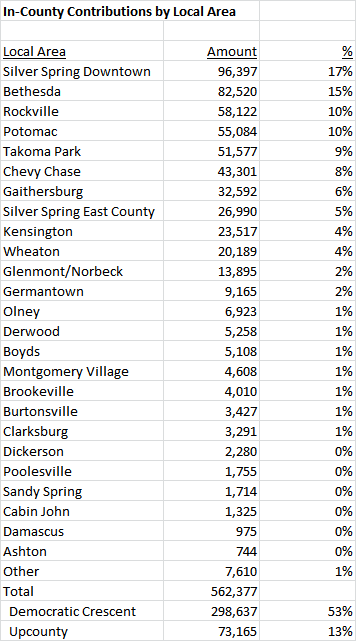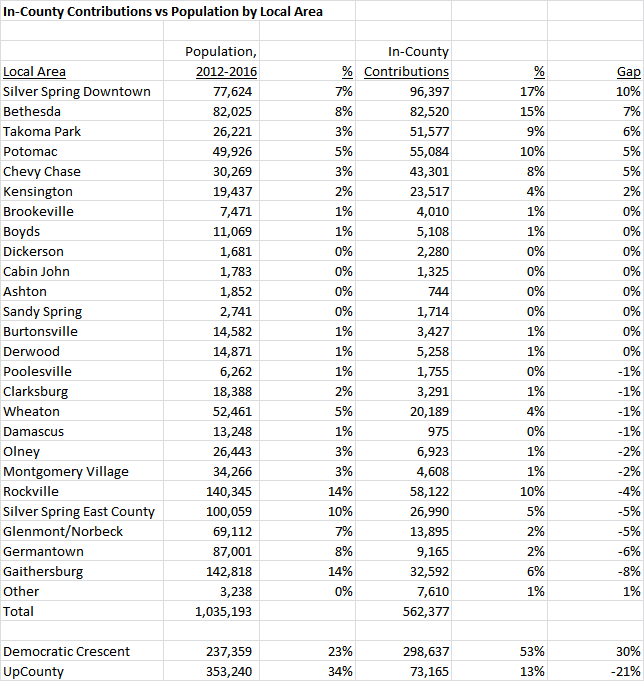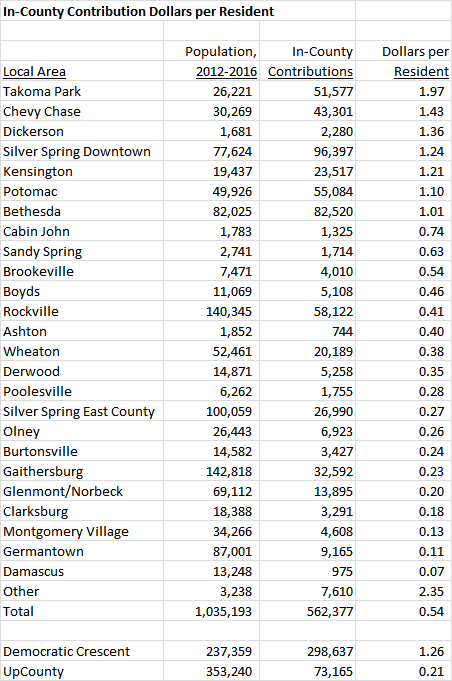By Adam Pagnucco.
Today we look at fundraising by the Council District candidates. As with our prior posts on the County Executive and Council At-Large races, we start with a note on methodology. First, we calculate total raised and total spent across the entire cycle and not just over the course of one report period. Second, we separate self-funding from funds raised from others. Self-funding includes money from spouses. Third, for publicly financed candidates, we include public matching fund distributions that have been requested but not deposited in raised money and in the column entitled “Cash Balance With Requested Public Contributions.” That gives you a better idea of the true financial position of publicly financed campaigns.
Let’s start with the Council District 1 candidates.
Former Comptroller staffer Andrew Friedson is easily the fundraising leader. His total raised for the cycle ($333,081) exceeds any of the Council At-Large candidates and his cash on hand ($245,290) almost equals the cash on hand of the next three candidates combined ($251,205). Friedson has raised $159,257 from individuals in Bethesda, Chevy Chase, Glen Echo, Cabin John, Kensington, Potomac and Poolesville, which represents 48% of his take. That amount is not very different from the TOTAL fundraising from others reported by former Kensington Mayor Pete Fosselman ($174,996) and former Planning Board Member Meredith Wellington ($138,820). Of Friedson’s 1,074 contributions, 702 were for $150 or less.
The endorsement leader in District 1 is Delegate Ana Sol Gutierrez, who has the support of MCEA, Casa in Action, SEIU Locals 500 and 32BJ, Progressive Maryland and MCGEO. But Gutierrez’s main base of voters is Wheaton, which is not in the district, and she does not have a lot of money for mail. Friedson got a big boost when the Post endorsed him.
Reggie Oldak faces a cash crunch at the end because of her decision to participate in public financing. Unlike Friedson, Fosselman or Wellington, she can’t get big corporate or self-financed checks to catch up late and she has already received the maximum public matching funds available ($125,000). District 1 has by far more Democratic voters than any other district and past candidates, like incumbent Roger Berliner and former incumbent Howie Denis, raised comparable amounts to the at-large candidates. The next County Council should consider whether to adjust the matching funds cap to avoid handicapping future District 1 candidates who enroll in public financing.
Now let’s look at the Council District 3 candidates.
Incumbent Sidney Katz and challenger Ben Shnider have raised comparable amounts for the cycle. But Shnider’s burn rate has been much higher (partly driven by early mail) and Katz has more than twice his cash on hand.
Katz’s strength is not simply his incumbency but the fact that he has been a county or municipal elected official in the district longer than Shnider has been alive. That shows up in their fundraising. Katz is in public financing and recently announced that he will receive the maximum public matching funds contribution of $125,000. Of Shnider’s $199,454 total raised, just $14,639 (7%) came from individuals in Rockville, Gaithersburg, Washington Grove, Derwood and zip codes 20878 and 20906. That is a huge gap in starting indigenous support that Shnider has to close.
Here are the summaries for Council Districts 2, 4 and 5.
Council District 5 challenger Kevin Harris qualified for public matching funds so he can send mail against incumbent Tom Hucker. But we expect Hucker and his fellow council incumbents, Craig Rice and Nancy Navarro, to be reelected.




